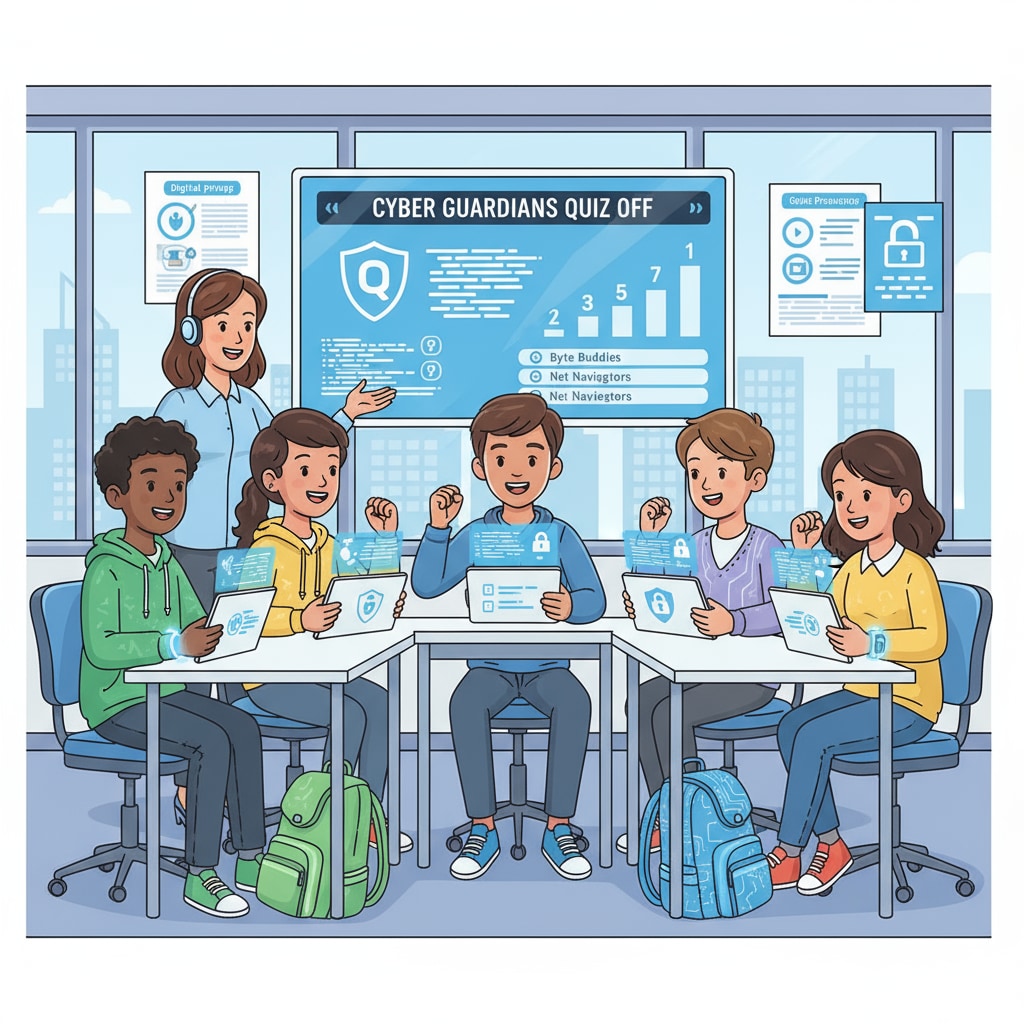Cybersecurity education, student engagement, and plain explanations are crucial elements when it comes to teaching K12 students about digital safety. In today’s digital age, where children are constantly exposed to the online world, it is essential for educators to find effective ways to convey these important concepts.

Understanding the Need for Cybersecurity Education in K12
As technology continues to evolve, K12 students are becoming more active users of digital devices. They use the internet for various purposes, such as learning, entertainment, and communication. However, this also exposes them to potential online threats. For example, they may encounter cyberbullying, phishing attempts, or malware. Therefore, teaching them basic cybersecurity knowledge is like giving them a shield to protect themselves in the digital realm. According to OnGuardOnline.gov, an initiative by the U.S. Department of Homeland Security, educating young people about digital safety can significantly reduce the risks they face online.
Engaging Teaching Methods for K12 Students
To ensure student engagement in cybersecurity education, teachers need to use methods that resonate with young minds. One effective approach is to use real – life examples. For instance, sharing stories of how someone fell victim to a phishing scam can make the concept more relatable. Another method is through interactive activities. Teachers can organize cybersecurity quizzes or create simulation games where students have to identify and solve digital threats. This hands – on experience not only makes learning fun but also helps students better understand and remember the concepts.

Using multimedia resources is also a great way to capture students’ attention. Videos, animations, and infographics can simplify complex cybersecurity concepts. For example, an animation that shows how malware infects a device can be more engaging than a traditional lecture. Additionally, teachers can encourage group discussions. By having students share their thoughts and experiences, they can learn from each other and develop a deeper understanding of the topic.
Common Mistakes to Avoid in Cybersecurity Education
While teaching K12 students about cybersecurity, there are some common mistakes that educators should avoid. One of the biggest mistakes is using overly technical language. K12 students may not understand complex terms like “encryption” or “two – factor authentication”. Teachers should strive to use plain language and provide simple explanations. Another mistake is focusing too much on theory and neglecting practical applications. Students need to know how to apply the knowledge they learn in real – world situations. For example, instead of just explaining what a strong password is, teachers should guide students on how to create one.
Not updating the curriculum regularly is also a problem. The digital landscape is constantly changing, and new threats emerge regularly. Teachers need to keep the cybersecurity curriculum up – to – date to ensure students are learning the most relevant information. According to Techopedia, staying updated with the latest trends in cybersecurity is essential for effective teaching.
The “CYA Security” Project: A Practical Approach
The “CYA Security” (Cover Your Assets Security) project can be a valuable addition to cybersecurity education in K12. This project focuses on using everyday language and interactive experiences. Teachers can start by introducing the basic principles of CYA Security, such as protecting personal information, being cautious of online links, and keeping devices secure. Through role – playing activities, students can act out scenarios where they have to apply these principles. For example, they can simulate a situation where they receive a suspicious email and have to decide how to respond.
The project can also include group projects where students create their own cybersecurity campaigns. They can design posters, create short videos, or develop presentations to educate their peers about digital safety. This not only reinforces their own learning but also promotes peer – to – peer education, which can be highly effective in engaging students.
Readability guidance: In this article, we have explored different aspects of teaching cybersecurity to K12 students. We started by understanding the need for such education, then looked at engaging teaching methods, common mistakes to avoid, and finally, a practical project like “CYA Security”. By focusing on student engagement and using plain explanations, we can ensure that K12 students are well – equipped to handle the digital challenges they face.


